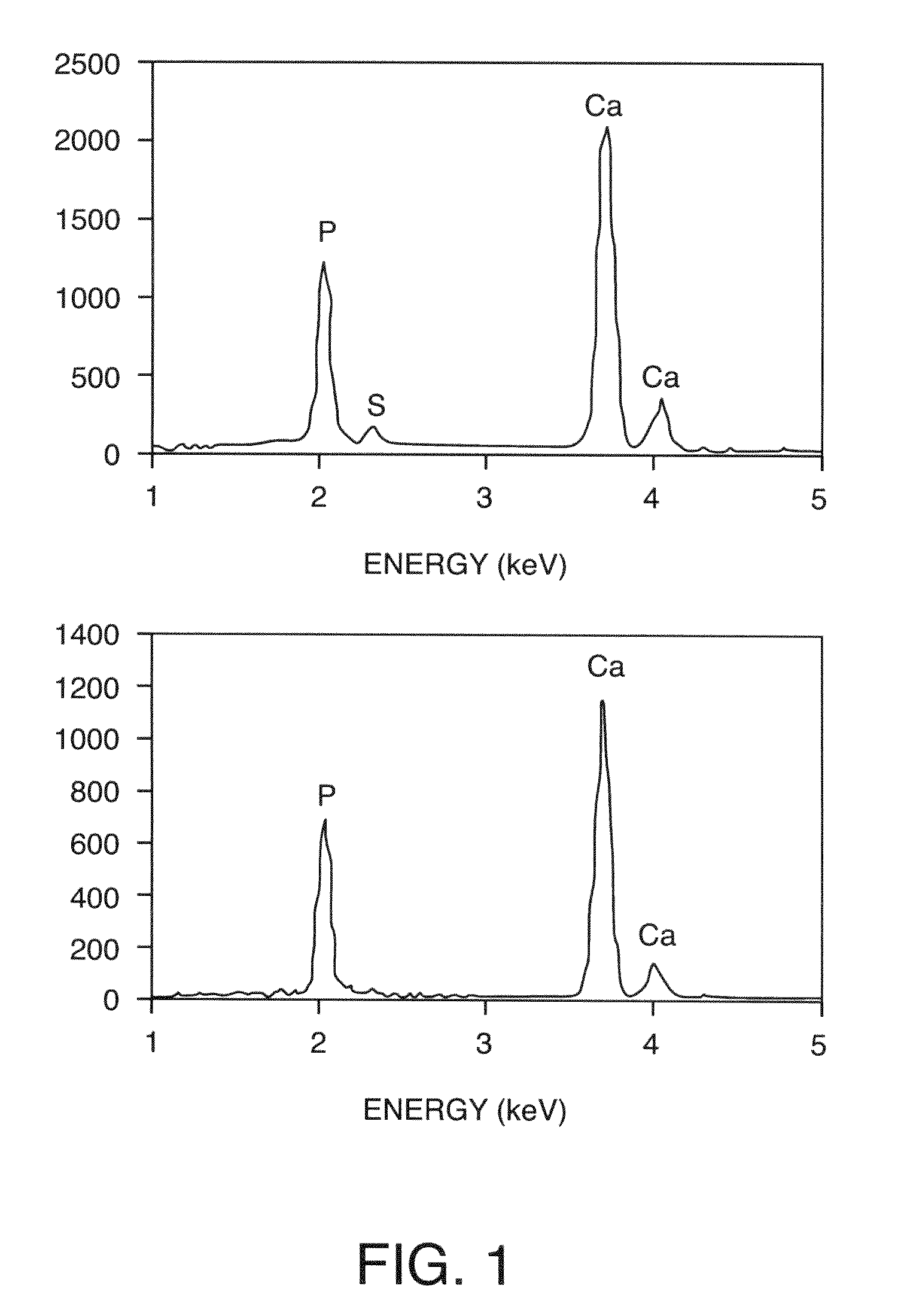Polymer Compositions For Biomedical And Material Applications
a biomedical and material technology, applied in the field of composite materials, can solve the problems of patients' substantial problems, the benefit of such surgeries is relatively short, and other porous and biodegradable scaffolds are generally not suitable for load bearing applications
- Summary
- Abstract
- Description
- Claims
- Application Information
AI Technical Summary
Benefits of technology
Problems solved by technology
Method used
Image
Examples
example i
Preparation and Processing of the Flexbone Composites
[0225]The HA content of the FlexBone is defined as the weight percentage of the HA incorporated over the total weight of the HA, hydrogel monomer HEMA, and cross-linker ethylene glycol dimethacrylate (EGDMA) used in any given preparation. In a typical procedure, freshly distilled HEMA was mixed with EGDMA along with ethylene glycol, water and aqueous radical initiators ammonium persulfate (480 mg / mL) and sodium metasulfite (180 mg / mL) at a volume ratio of 100:2:55:0:5:5 (formulation 1), 100:2:20:35:10:10 (formulation 2), 100:2:35:20:5:5 (formulation 3), or 100:2:60:40:5:5 (formulation 4; applied to composites containing >50% HA only). Commercial HA or calcined HA powder was then added to the hydrogel mixture, thoroughly mixed by using a ceramic ball to break up the large agglomerates, and allowed to polymerize in a plastic syringe barrel to afford composites with HA contents varying from 30% to 70%. The resulting rubbery material ...
example ii
Microstructural Characterization and Compression Tests
[0228]The microstructures of the composites were characterized using environmental scanning electron microscopy (ESEM) on a Hitachi S-4300SEN microscope (Hitachi, Japan). The chamber pressure was kept at ˜35 Pa to avoid complete sample dehydration and surface charging during the observation. The chemical composition was analyzed using energy dispersive spectroscopy (EDS) (Noran System SIX, Thermoelectron, USA) attached to the ESEM.
[0229]Two types of HA powder were used: the commercial polycrystalline powder (Alfa Aesar, Ward Hill, Mass.) consisting of micrometer-sized loose aggregates of HA crystallites that are ˜100 nm (nanocrystals) in size and HA powder calcined at 1100° C. Calcined HA powder consisted of dense particles with a bimodal size distribution at the submicrometer scale (FIG. 7). Both types of HA powder were well distributed throughout the hydrogel network at all mineral contents examined, as indicated by SEM analysi...
example iii
In Vivo Resorption of Flexbone Composites and their Ability to Support Osteogenic Differentiation
[0236]All animal procedures were conducted in accordance with the principles and procedures approved by the University of Massachusetts Medical School Animal Care and Use Committee. Rat bone marrow stromal cells BMSC were isolated from long bones of 4-week old male Charles River SD strain rats. Marrow was flushed from the femur with a syringe. After lysing red blood cells with sterile water, the marrow cells were centrifuged and resuspended in minimum essential medium (MEM) supplemented with 20% FBS, 0.2% penicillin-streptomycin and 1% L-glutamine, and passed through a sterile metal filter. Cells were expanded on tissue culture plates (10 million cells per 100-mm plate) with media changed every other day before being lifted off on day 4 for plating on FlexBone.
[0237]FlexBone composites were subcutaneously implanted with and without pre-seeded BMSC in rats. Thin half discs (7 mm in diamet...
PUM
| Property | Measurement | Unit |
|---|---|---|
| size | aaaaa | aaaaa |
| size | aaaaa | aaaaa |
| compressive behavior | aaaaa | aaaaa |
Abstract
Description
Claims
Application Information
 Login to View More
Login to View More - R&D
- Intellectual Property
- Life Sciences
- Materials
- Tech Scout
- Unparalleled Data Quality
- Higher Quality Content
- 60% Fewer Hallucinations
Browse by: Latest US Patents, China's latest patents, Technical Efficacy Thesaurus, Application Domain, Technology Topic, Popular Technical Reports.
© 2025 PatSnap. All rights reserved.Legal|Privacy policy|Modern Slavery Act Transparency Statement|Sitemap|About US| Contact US: help@patsnap.com



